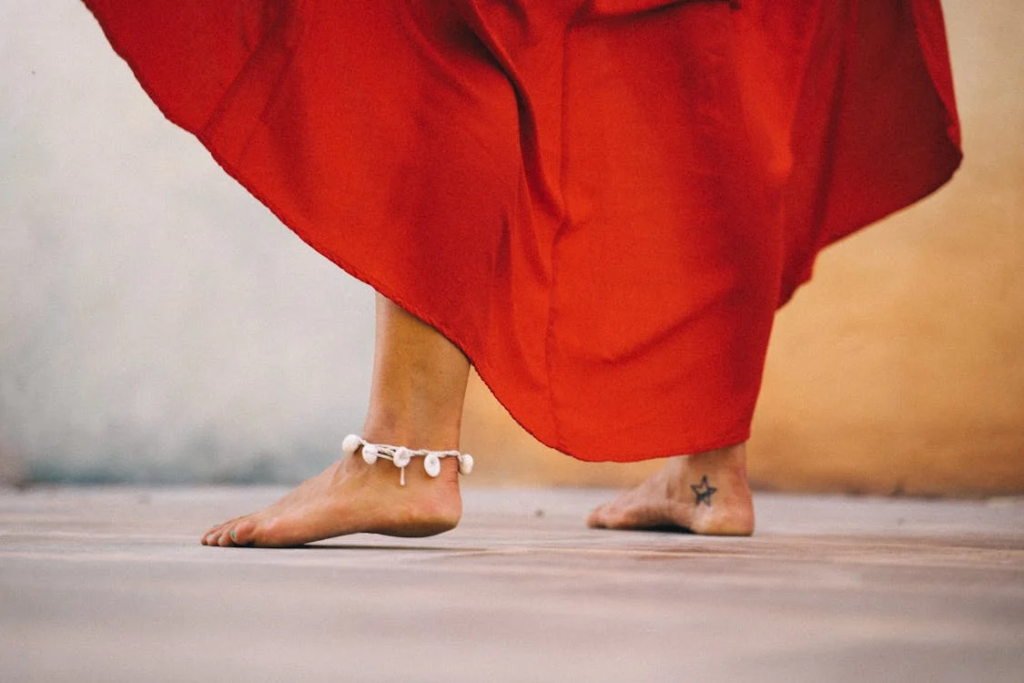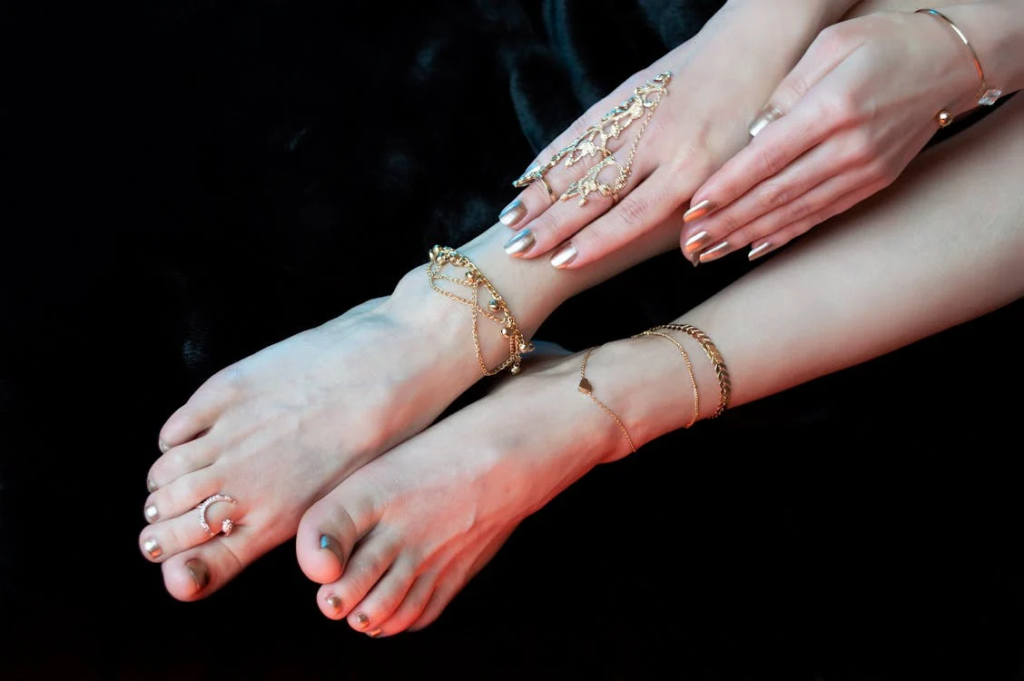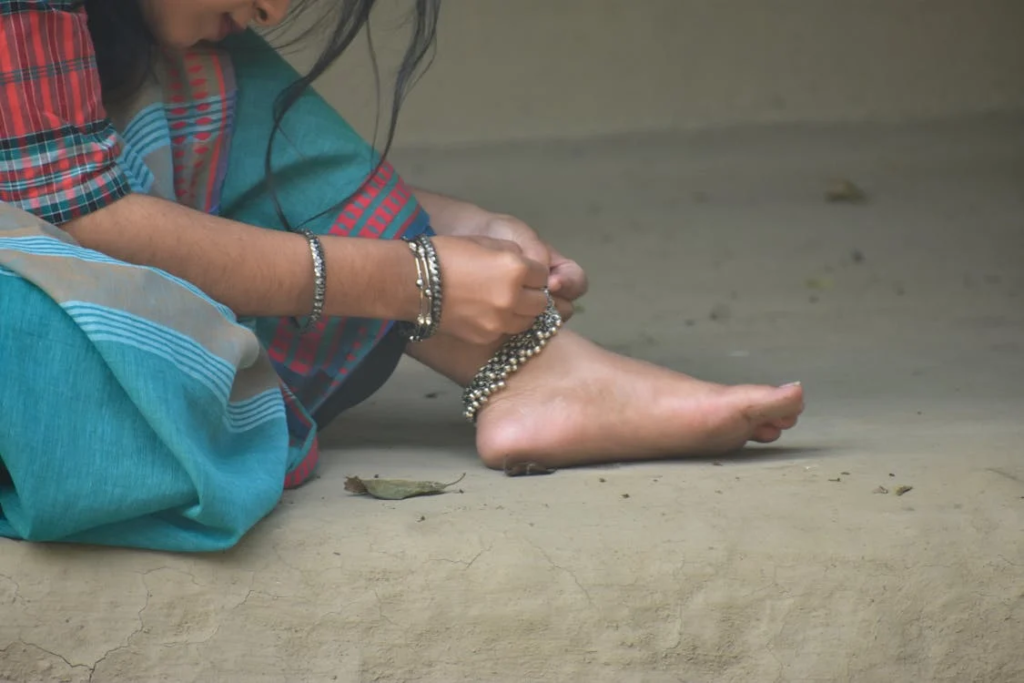Why Do People Wear Ankle Bracelets?

Ankle bracelets, often simply called anklets, are much more than just a pretty accessory. While they certainly add a charming touch to any outfit, from relaxed everyday wear to elegant formal attire, these seemingly simple ornaments actually carry a fascinating and deep history of meaning. Have you ever wondered about the true significance of an ankle bracelet? You might be surprised by what you discover!
ADVERTISEMENT
For thousands of years, from ancient civilizations to our modern world, anklets have held a variety of cultural, spiritual, and personal meanings. These meanings differ greatly across different parts of the world. By exploring these diverse interpretations, we not only uncover the rich historical journey of the anklet but also understand its powerful symbolic role in various societies.
ADVERTISEMENT
Ancient Beginnings: A Symbol of Wealth and Spiritual Connection

ADVERTISEMENT
Anklets have a long and storied past, with evidence of their use dating back thousands of years in prominent ancient civilizations like Egypt, Mesopotamia, and India. In ancient Egypt, the type of anklet worn often indicated a person’s social standing. Wealthy women would adorn their ankles with intricate gold anklets to proudly display their riches, while those with fewer resources typically wore simpler designs. Beyond just showing off wealth, Egyptians also believed that anklets possessed spiritual energy. They were frequently combined with charms or symbols to attract good luck and ward off evil spirits.
In India, the meaning of an ankle bracelet has been a vital part of traditional dress for many centuries. These beautiful ornaments, known as “payal,” are commonly worn by married women as a clear sign of their marital status and cultural pride. Silver anklets are much more common than gold ones in India, due to cultural beliefs about how sacred gold is. Often, these silver anklets have tiny bells that create a gentle, pleasant chiming sound. This sound is believed to bring prosperity and happiness to the home.
African and Middle Eastern Customs: Links to Fertility and Protection

In many African cultures, anklets are deeply meaningful, carrying significant cultural and symbolic messages. Among certain tribes, anklets can signal a woman’s marital status or even her fertility. For instance, bead anklets with specific colors or patterns can communicate important information about a woman’s readiness for marriage or her specific role within the community. Some designs even feature symbols that represent divine blessings, such as good health, abundance, or fertility.
In the Middle East, “the meaning of an ankle bracelet is linked to both femininity and protection.” Historically, dancers would wear anklets decorated with small bells. These bells served to emphasize their graceful movements and create a rhythmic musical accompaniment as they performed. It was also believed that these anklets could ward off negative energy and attract good fortune. Additionally, anklets featuring the “evil eye motif” were worn as a protective charm against jealousy and bad luck.
European Interpretations: Elegance and Allure

In Europe, anklets were often seen as symbols of refined elegance and allure. During the Victorian era, they were worn discreetly beneath long skirts, conveying a sense of sophistication and femininity. In contrast, modern European fashion has embraced anklets as a bold way to express individuality. Today, anklets are often paired with casual summer outfits, and even formal eveningwear, showcasing a wonderful blend of traditional charm and contemporary style.
Asian Beliefs: Spiritual Energy and Connection to the Earth

Across Asia, “meaning of an ankle bracelet is closely tied to spirituality and energy flow.” In traditional Chinese medicine, the ankles are considered crucial energy points that connect the human body to the earth. Wearing an anklet is thought to enhance this connection, helping to promote balance and overall well-being.
In Thailand, young children sometimes wear anklets to protect them from harm. These anklets, adorned with tiny bells, serve both as a protective charm and as a practical way for parents to keep track of their little ones.
Modern Interpretations: Where Fashion Meets Personal Expression

While ankle bracelets are rich with historical traditions, their modern use often reflects personal expression rather than strict societal rules. In Western cultures, anklets are a popular accessory that can symbolize various things, such as freedom, sensuality, or simply a love for unique and beautiful jewelry.
Even today, the choice of which ankle to wear an anklet on can carry subtle meanings. Some people believe that wearing an anklet on the left foot offers protection against negative energy and illness, while an anklet worn on the right foot represents balance and a strong sense of personal identity.
Uncovering the Meaning of an Ankle Bracelet

From the ancient sands of Egypt to the vibrant, bustling streets of today’s modern cities, anklets have consistently remained a cherished accessory, carrying profound cultural, spiritual, and personal significance. They stand as a powerful testament to the many diverse ways humans have used adornments to communicate their identity, their status, and their deepest beliefs.
Whether an anklet is worn for protection, to honor a tradition, or purely for fashion, this timeless piece of jewelry continues to fascinate and capture the imagination of people worldwide. Understanding its rich history and its many varied meanings only deepens our appreciation for this beautiful and symbolic accessory.




